Test and Analysis of the Heat Dissipation Effect of the Spindle Heat Conductive Path Based on the IPTO Algorithm
Abstract
:1. Introduction
2. Topology Structural Design Based on IPTO Algorithm
2.1. Centralized Thermal Conductivity Model
2.2. Ring-Shaped Model of Heat Conductive Path
3. Experimental Verification of the Heat Dissipation Effect
3.1. Experimental Testing Platform for the Heat Dissipation Effect of Heat Conductive Path
3.1.1. Experimental Platform
3.1.2. Experimental Instruments
- (1)
- Infrared thermal imager
- (2)
- Temperature Collector
- (3)
- Cooling water jacket
- (4)
- Heating device
- (5)
- Thermal conductive and insulating materials
3.2. Water Cooling Experiment
3.2.1. Experimental Plan
- Assemble the ordinary testing sample, the heating ring, and the cooling water jacket. Then use thermal conductive silicone grease to fill the assembly gaps of the test pieces to enhance thermal conduction and use insulation paint to coat the surface of the test pieces and wait for solidification, which can enhance insulation performance.
- Connect the heating ring to the PID temperature control box, the cooling water jacket, and the oil cooler.
- Adjust the position and angle of the infrared thermal imager and fix its position after focusing.
- Connect the infrared thermal imager to the PC terminal. Then debug and calibrate it.
- Install a temperature sensor and connect it to a multi-channel data recorder to monitor the temperature changes in real time and record the time from the start of heating to the steady state.
- The heating ring, controller and testing instrument were all powered on. A PID temperature control box was used to control the heating ring to output a constant power of P = 292 W. The oil cooler circulates coolant to the cooling water jacket, which made the cooling water jacket provide a 25 °C constant temperature boundary.
- Use the FLIR infrared thermal imager to test the temperature changes of the entire testing sample and quantitatively analyze the temperature of the pixel points.
- After completely cooling down, without changing the position of the infrared thermal imager, replace the ordinary sample with the sample with a heat conductive path and repeat above steps.
3.2.2. Testing Results and Analysis
- (1)
- Analysis of experimental data of the model with or without heat conductive paths
- (2)
- The effect of copper volume proportion on the heat dissipation effect of the heat conductive path
3.3. Air Cooling Experiment
3.3.1. Experimental Plan
- Apply heat insulating coating evenly on the front and back faces of the ordinary testing sample, assemble the testing sample and heating ring, connect the heating ring to the PID temperature control box;
- Install temperature sensors along the circumference of the outer circle of the testing sample and connect to the multi-channel data acquisition instrument;
- The heating ring, controller and test instrument were all turned on, and the PID temperature control box was used to control the heating ring with a constant power output of P = 44 W;
- The temperature changed points and the time required for the sample to reach steady state were recorded;
- After completely cooling the machine, replace the ordinary sample with the one with heat conductive paths and repeat the above steps.
3.3.2. Testing Results and Analysis
4. Conclusions
- Under water-cooled conditions, the maximum average temperature of the inner ring of the ring-shaped testing sample without the heat conductive path was 48.6 °C, and the time to reach thermal steady state was 1378 s; the average temperature of the inner ring of the sample with the heat conductive path (40% copper volume proportion) was 41.5 °C, and the time to reach thermal steady state was 1117 s. Compared with the former, the temperature was reduced by 7.1 °C, and the time required for thermal equilibrium was shortened by 261 s. Under the air-cooling condition, comparing with the sample without the heat conductive path, the temperature of the sample with heat conductive path (40% copper volume proportion) was reduced by 2.4 °C, and the time required for thermal equilibrium was shortened by about 20 min. In summary, the heat conductive path can effectively reduce the temperature rise and enhance the heat dissipation of the spindle.
- As the copper volume proportion increased, the maximum temperature of the disc after thermal stabilization decreased gradually. But after the copper volume proportion exceeded 40%, the trend decreased. It indicated that when the ratio of high thermal conductivity materials reached a certain value, the difference in thermal conductivity brought by different topology structures was no longer obvious, and the effect brought by the structural optimization had been overshadowed by the high thermal conductivity properties of the material at this time.
Author Contributions
Funding
Data Availability Statement
Conflicts of Interest
References
- Pahk, H.; Lee, S.W. Thermal Error Measurement and Real Time Compensation System for the CNC Machine Tools Incorporating the Spindle Thermal Error and the Feed Axis Thermal Error. Int. J. Adv. Manuf. Technol. 2002, 20, 487–494. [Google Scholar] [CrossRef]
- Wang, B.M.; Mei, X.S.; Wu, Z.X.; Zhu, F. Dynamic modeling for thermal error in motorized spindles. Int. J. Adv. Manuf. Technol. 2015, 78, 1141–1146. [Google Scholar] [CrossRef]
- Liu, J.L.; Ma, C.; Wang, S.L. Data-driven thermally-induced error compensation method of high-speed and precision five-axis machine tools. Mech. Syst. Signal Process. 2020, 138, 106538. [Google Scholar] [CrossRef]
- Liang, Y. Analysis of the change of spindle temperature of CNC lathe and its effect on machining accuracy. Sci. Technol. Vis. 2022, 32, 23–26. [Google Scholar]
- Chen, K.; Zhou, J.Z.; Jing, L.P. Analysis and calculation of thermal performance of high-speed electric spindle. World Manuf. Eng. Mark. 2022, 5, 64–67. [Google Scholar]
- Li, Y.; Chen, G.H.; Xia, M.; Liu, D.Q.; Zuo, Q.J. Design of Water Cooler for Spindle Thermal Control. Mach. Tool Hydraul. 2023, 51, 95–100. [Google Scholar]
- Wu, M.Y.; Li, B.W.; Sun, Y.J.; Jiang, W.Q.; Cheng, Y.N. Experimental Research on Cooling System of High-speed Motorized Spindle. Mach. Tool Hydraul. 2021, 49, 56–62. [Google Scholar]
- Jiao, Y.L. Study on Thermal Characteristics of New Laminated Cooling Water Jacket for High-speed Motorized Spindle. Master’s Thesis, Xi’an University of Technology, Xi’an, China, 2020. [Google Scholar]
- Wen, M.F.; Zhong, J.L.; Peng, B.Y.; Wang, P.J.; Wang, Z.X. Analysis on Thermal Structure Coupling and Material Selection of High Speed Motorized Spindle. Mach. Tool Hydraul. 2023, 51, 158–163. [Google Scholar]
- Li, H.L.; Cao, B.Y. Topology optimization of the volume-to-point heat conduction problem at micro- and nano-scale. Acta Phys. Sin. 2019, 68, 18–28. [Google Scholar] [CrossRef]
- Wei, S.H.; Chen, L.G.; Sun, F.R. “Volume-Point” heat conduction constructal optimization with entransy dissipation minimization objective based on rectangular element. Sci. China Ser. E Technol. Sci. 2008, 51, 1283–1295. [Google Scholar] [CrossRef]
- Li, Y.; Yu, M.L.; Bai, Y.M.; Hou, Z.Y.; Zhang, H.J.; Wu, W.W. A heat dissipation enhancing method for the high-speed spindle based on heat conductive paths. Adv. Mech. Eng. 2023, 15, 167675. [Google Scholar] [CrossRef]
- Zhang, H.; Zhang, D.L.; Zhang, X.G.; Mao, B. Optimal Design and Analysis of Thermal Topology of Two-dimensional Structures Based on Variable Density Method. Intern. Combust. Engine Parts 2023, 11, 23–26. [Google Scholar]
- Da Silva, A.K.; Vasile, C.; Bejan, A. Disc cooled with high-conductivity inserts that extend inward from the perimeter. Int. J. Heat Mass Transf. 2004, 47, 4257–4263. [Google Scholar] [CrossRef]
- Zhou, M.D.; Lazarov, B.S.; Wang, F.W.; Sigmund, O. Minimum length scale in topology optimization by geometric constraints. Comput. Methods Appl. Mech. Eng. 2015, 293, 266–282. [Google Scholar] [CrossRef]
- Li, B.T.; Hong, J.; Li, G.G.; Ge, L.H. On identifying optimal heat conduction topologies from heat transfer paths analysis. Int. Commun. Heat Mass Transf. 2018, 90, 93–102. [Google Scholar] [CrossRef]
- Lin, Q.Y.; Liu, L.; Wang, J.H.; Yan, K.; Guo, J.K. A Bionic Hierarchy Generative Design for Conductive Heat Transfer. J. Heat Transf. 2020, 142, 4047832. [Google Scholar] [CrossRef]
- Wu, S.H.; Zhang, Y.C.; Liu, S.T. A topology optimization model for conducting paths design of cooling structures considering transient effect. Chin. J. Comput. Mech. 2018, 35, 547–551. [Google Scholar]
- Deaton, J.D.; Grandhi, R.V. A survey of structural and multidisciplinary continuum topology optimization: Post 2000. Struct. Multidiscip. Optim. 2014, 49, 1–38. [Google Scholar] [CrossRef]
- Ji, X.T. Topology Optimization Design of Heat Sink Structure Based on Variable Density Method. Master’s Thesis, Hebei University of Technology, Tianjin, China, 2021. [Google Scholar]
- Ding, M.; Geng, D.; Zhou, M.D.; Lai, X.M. Topology Optimization Strategy of Structural Strength Based on Variable Density Method. J. Shanghai Jiaotong Univ. 2021, 55, 764–773. [Google Scholar]
- Bendsoe, M.P.; Sigmund, O. Material interpolation schemes in topology optimization. Arch. Appl. Mech. 1999, 69, 635–654. [Google Scholar] [CrossRef]
- Zhang, Y.F. Structural Topology Optimization Based on Proportional Topology Optimization Method. Master’s Thesis, Xidian University, Xi’an, China, 2018. [Google Scholar]
- Ullah, Z.; Ullah, B.; Khan, W.; Islam, S.U. Proportional topology optimization with maximum entropy-based meshless method for minimum compliance and stress constrained problems. Eng. Comput. 2022, 38, 5541–5561. [Google Scholar] [CrossRef]
- Wang, H. Research on Topology Optimization of Uncertain Continuum Structure. Ph.D. Thesis, Southwest Jiaotong University, Chengdu, China, 2017. [Google Scholar]
- Chen, Y.P.; Gao, L.; Xiao, M. Topology optimization design of heat dissipation structures based on variable density method. Comput. Integr. Manuf. Syst. 2018, 24, 117–126. [Google Scholar]
- Wang, H.; Cheng, W.M.; Zhai, S.C.; Peng, Q.H. Reliability-based topology optimization of continuum structure with the IPTO algorithm. Mod. Manuf. Eng. 2021, 12, 105–111. [Google Scholar]
- Huang, G.M.; Liu, M.M.; Yang, H.L.; Zhang, H.Y.; Fan, Y.F.; Xie, F.; Ge, S.L. Lightweight Design of Transmission Gear of an Aircraft Gun Ammunition Box based on SIMP Material Interpolation Model. J. Mech. Transm. 2019, 43, 55–58. [Google Scholar]
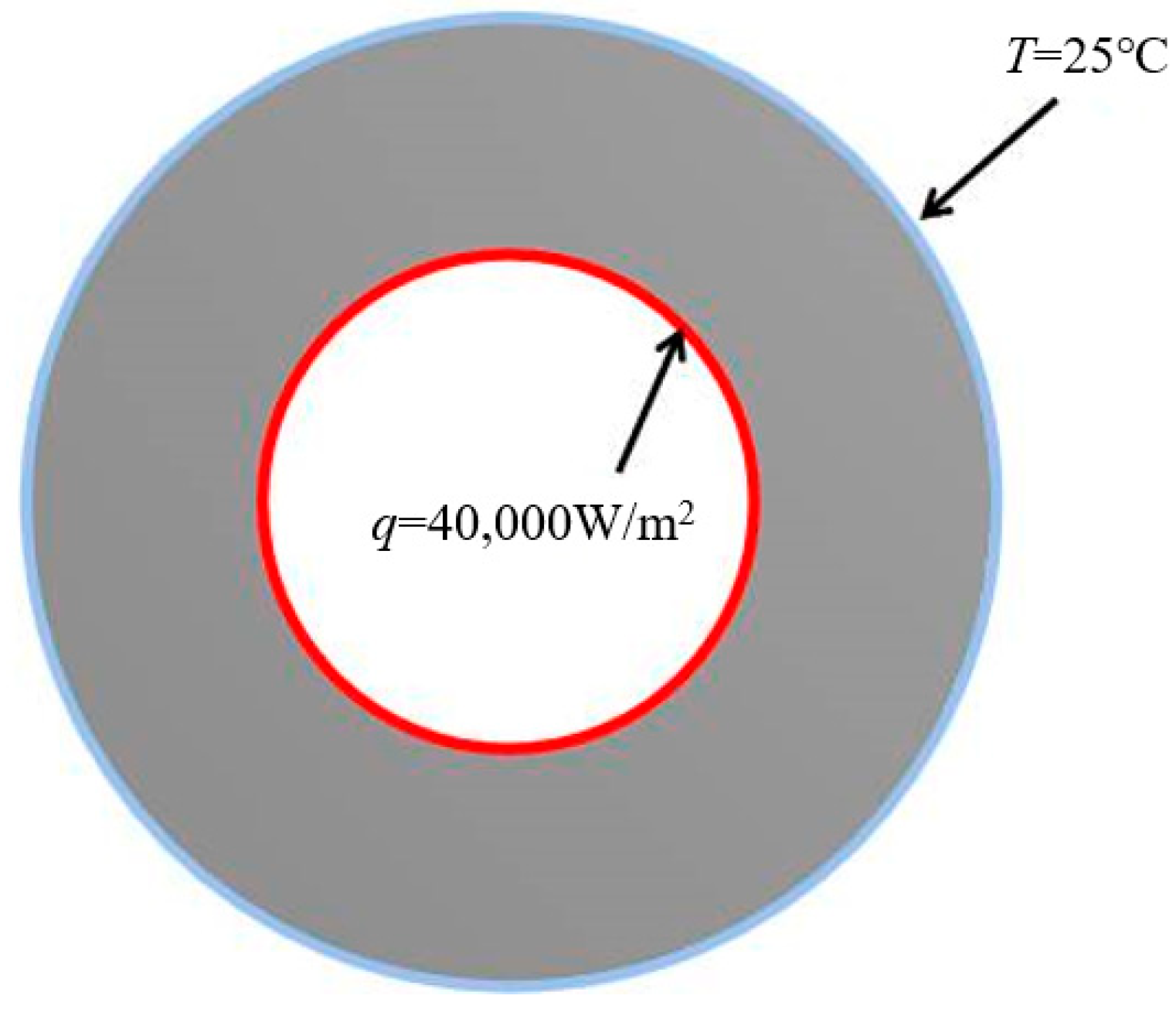
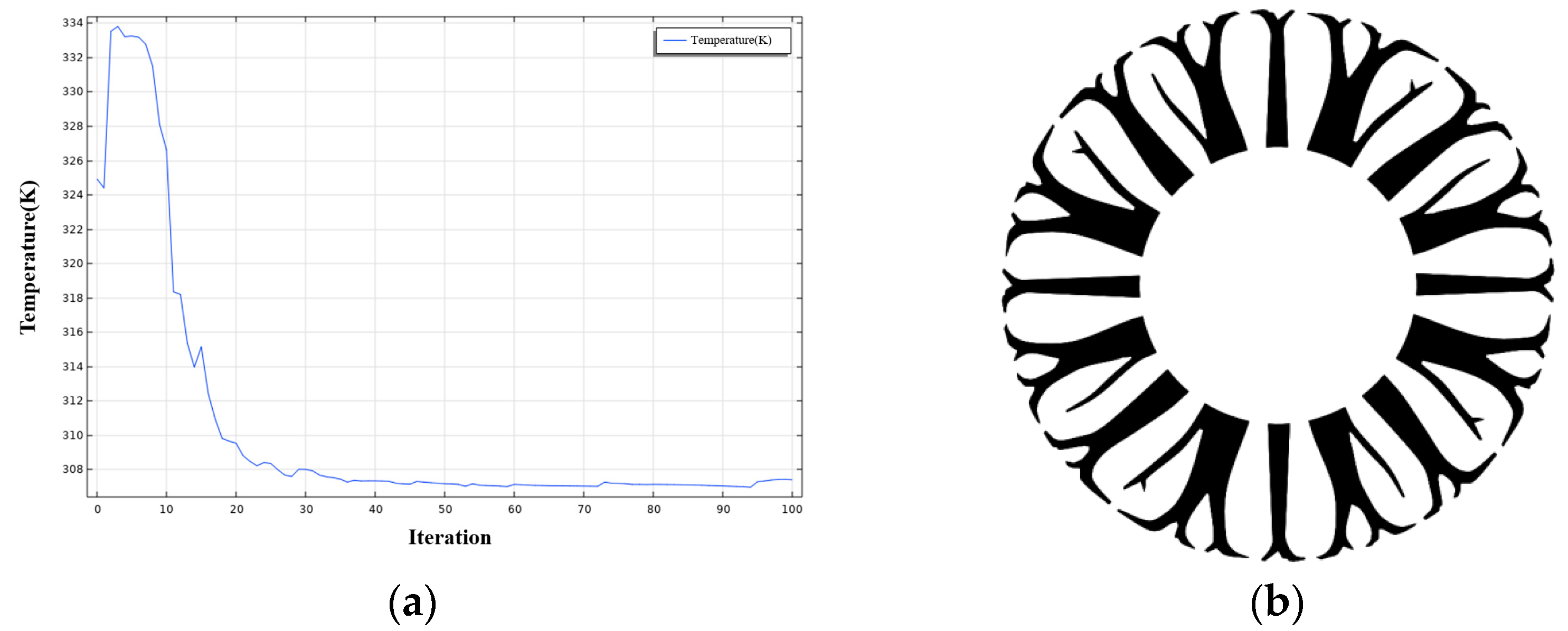
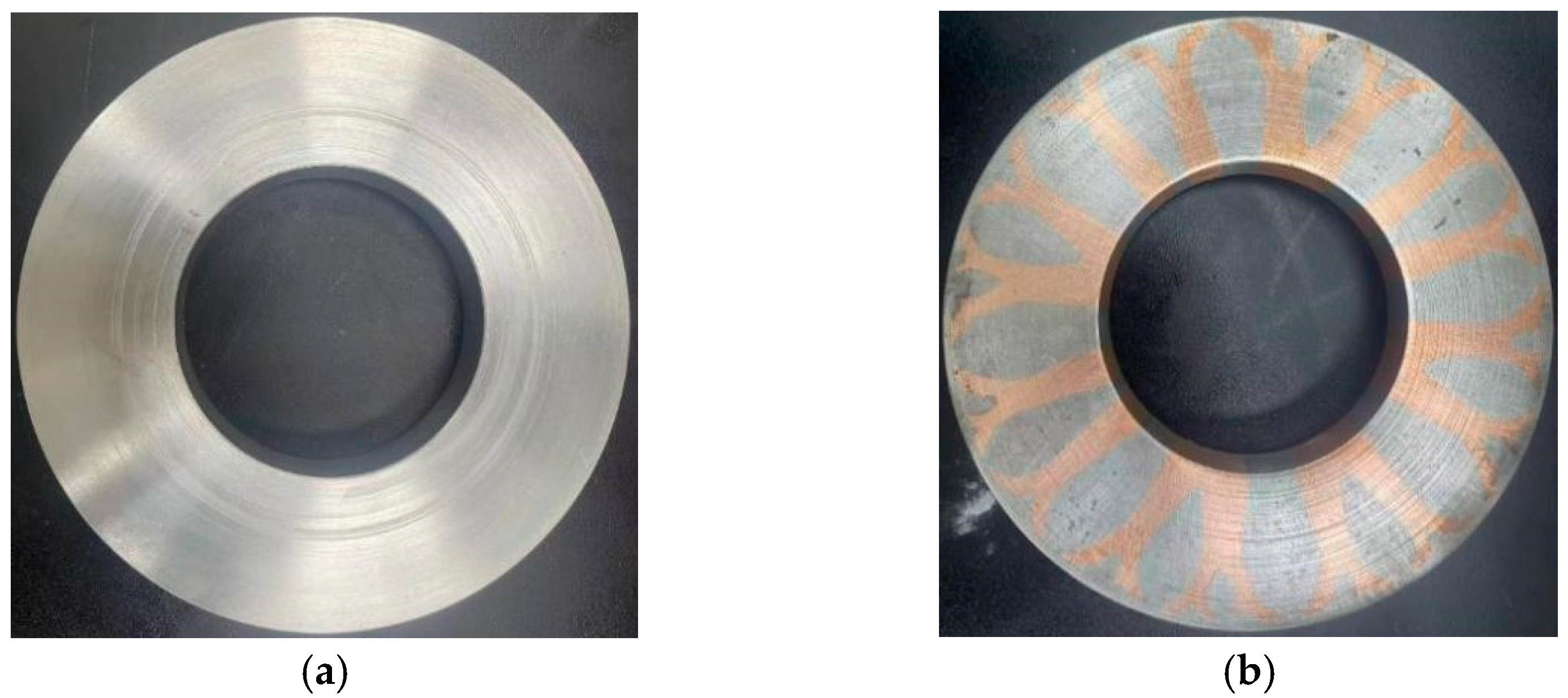
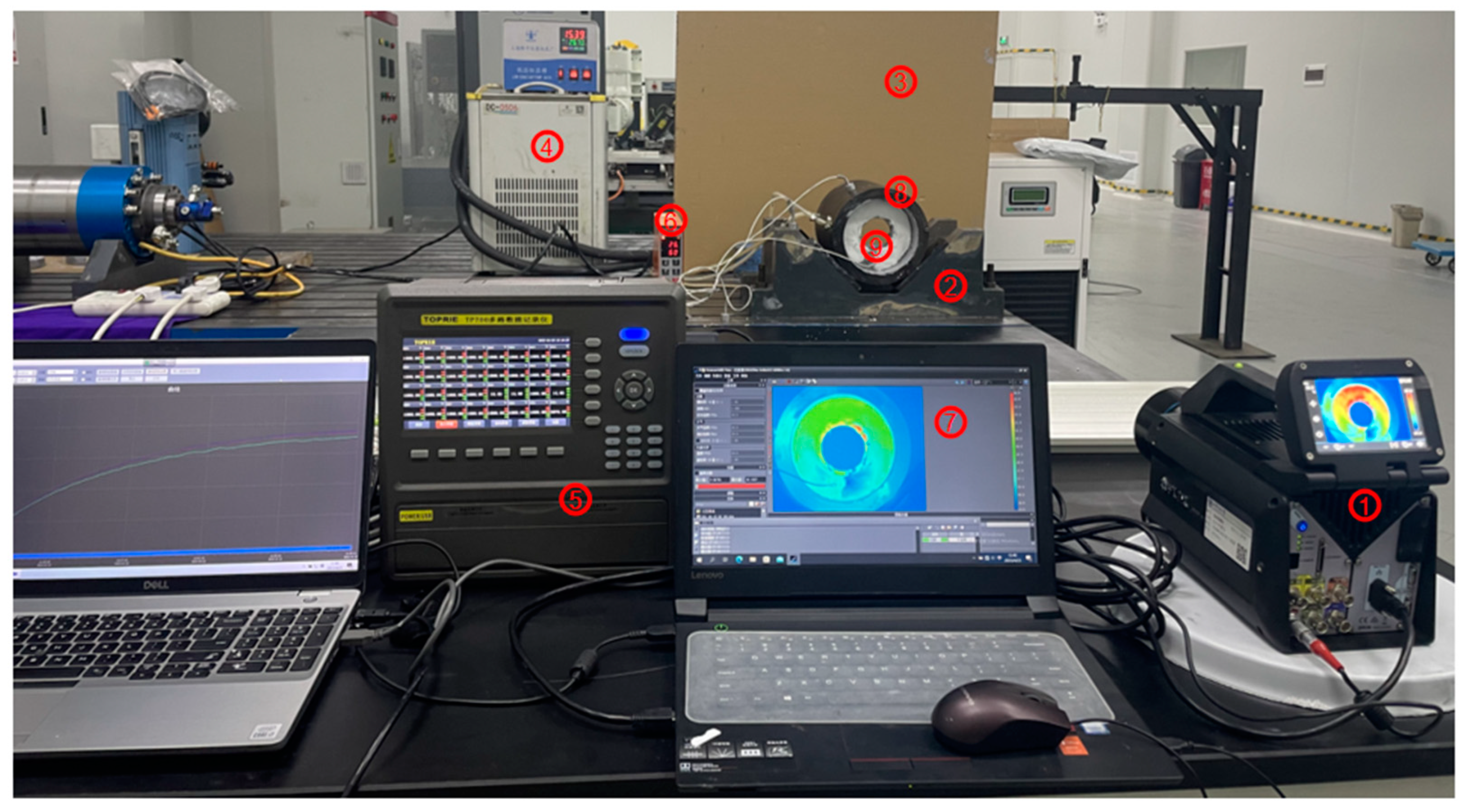
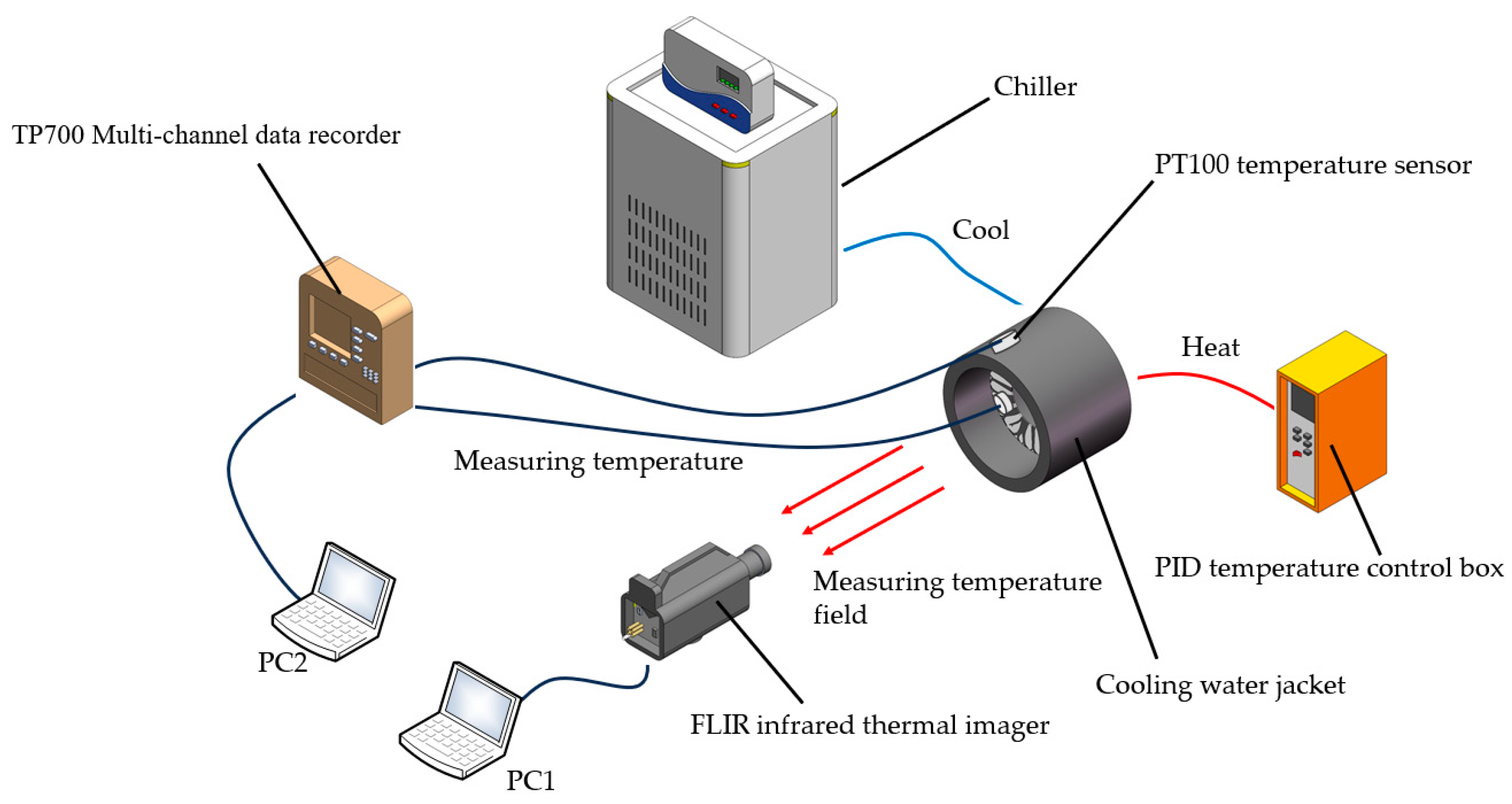
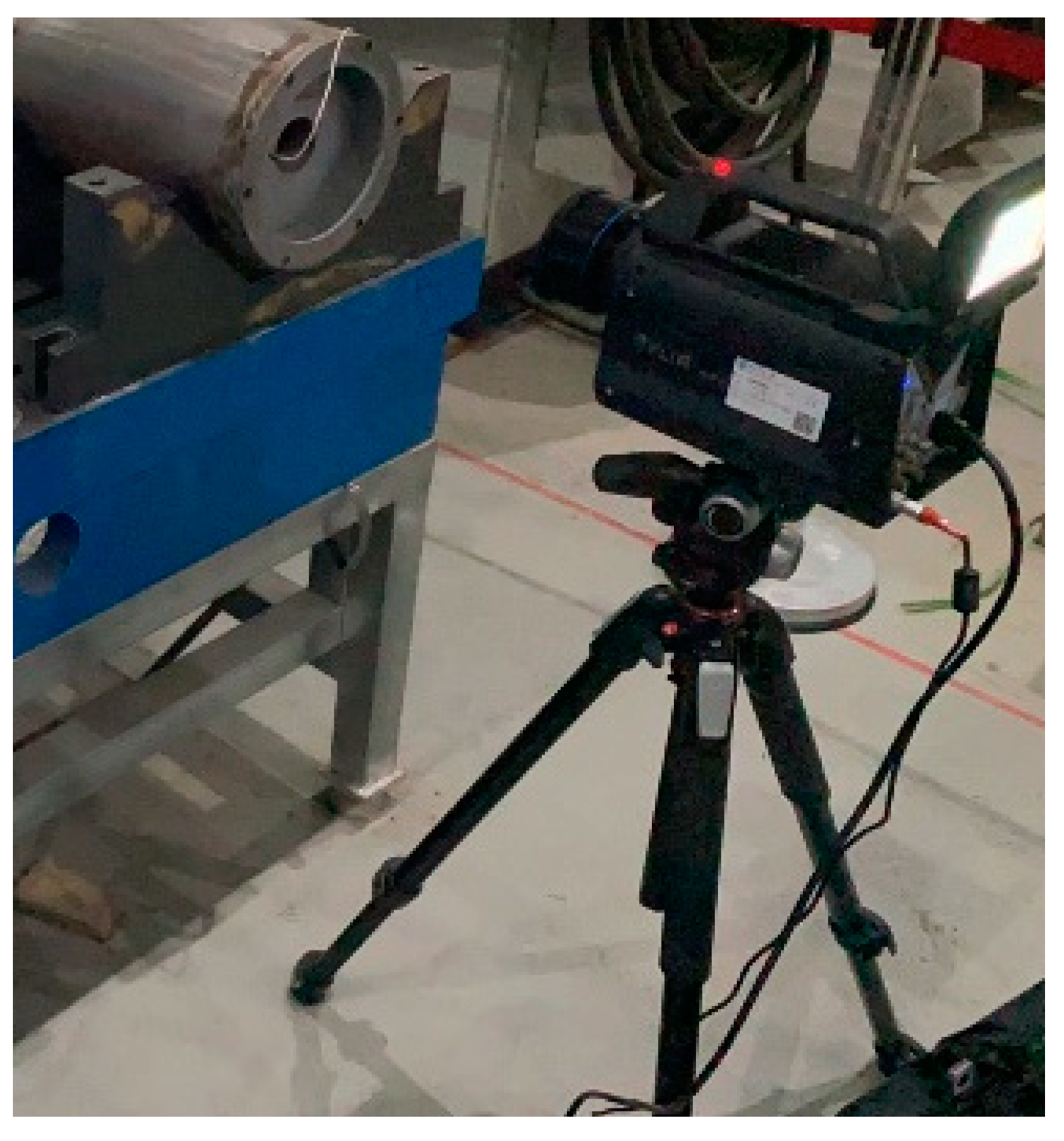

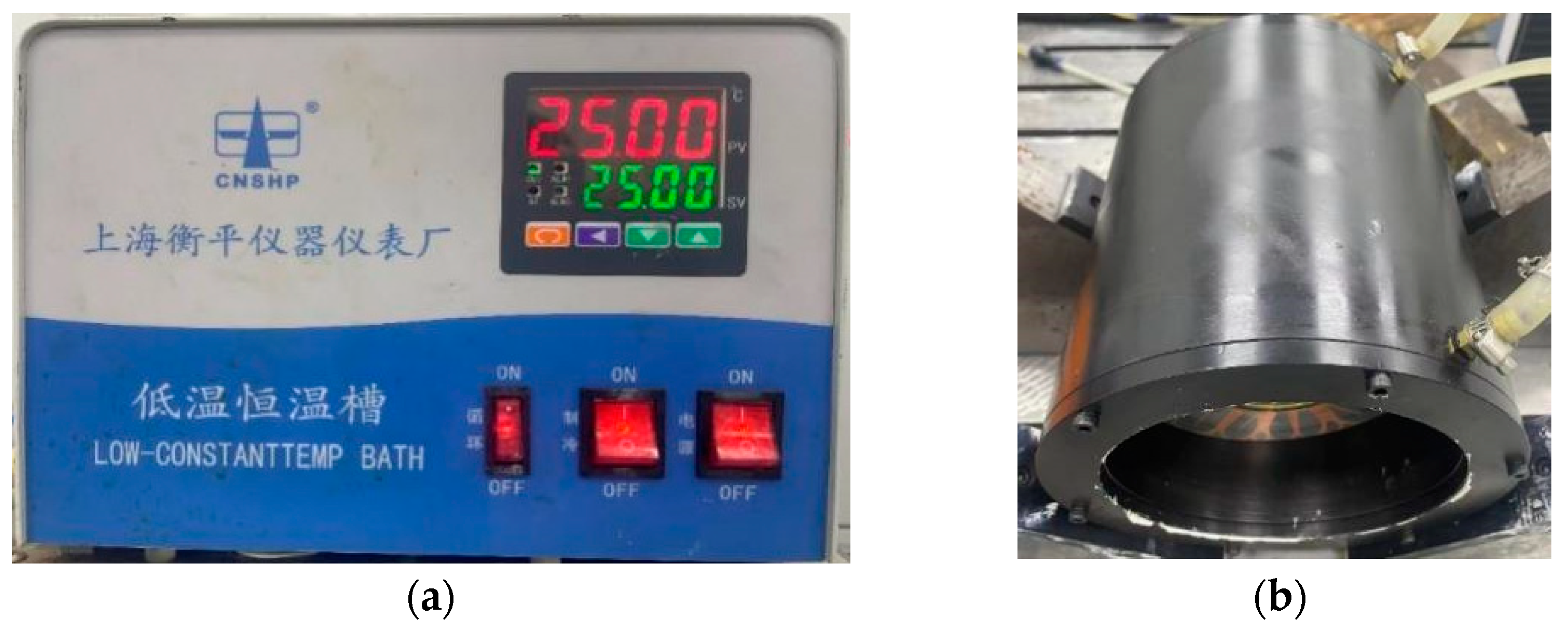



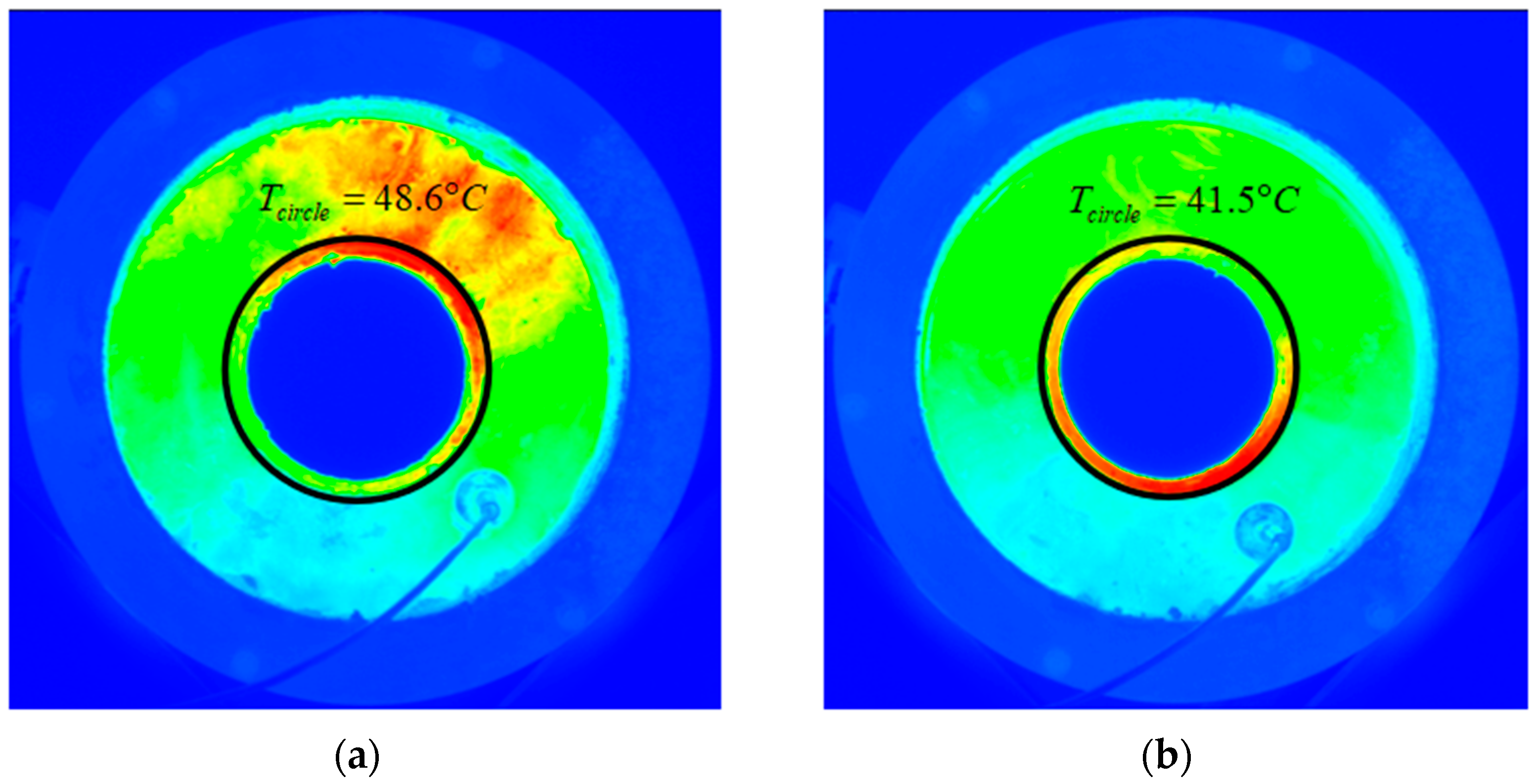
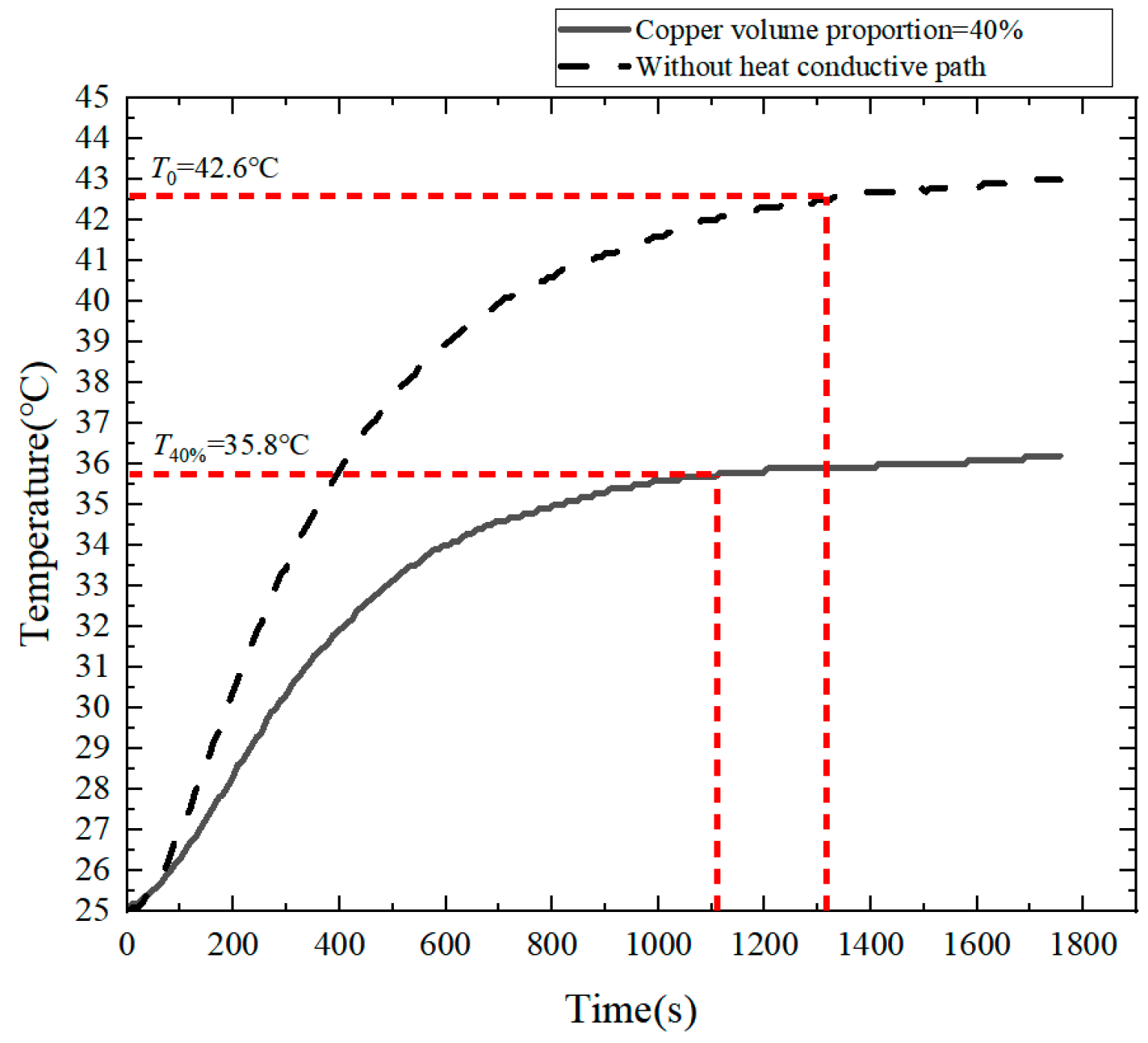
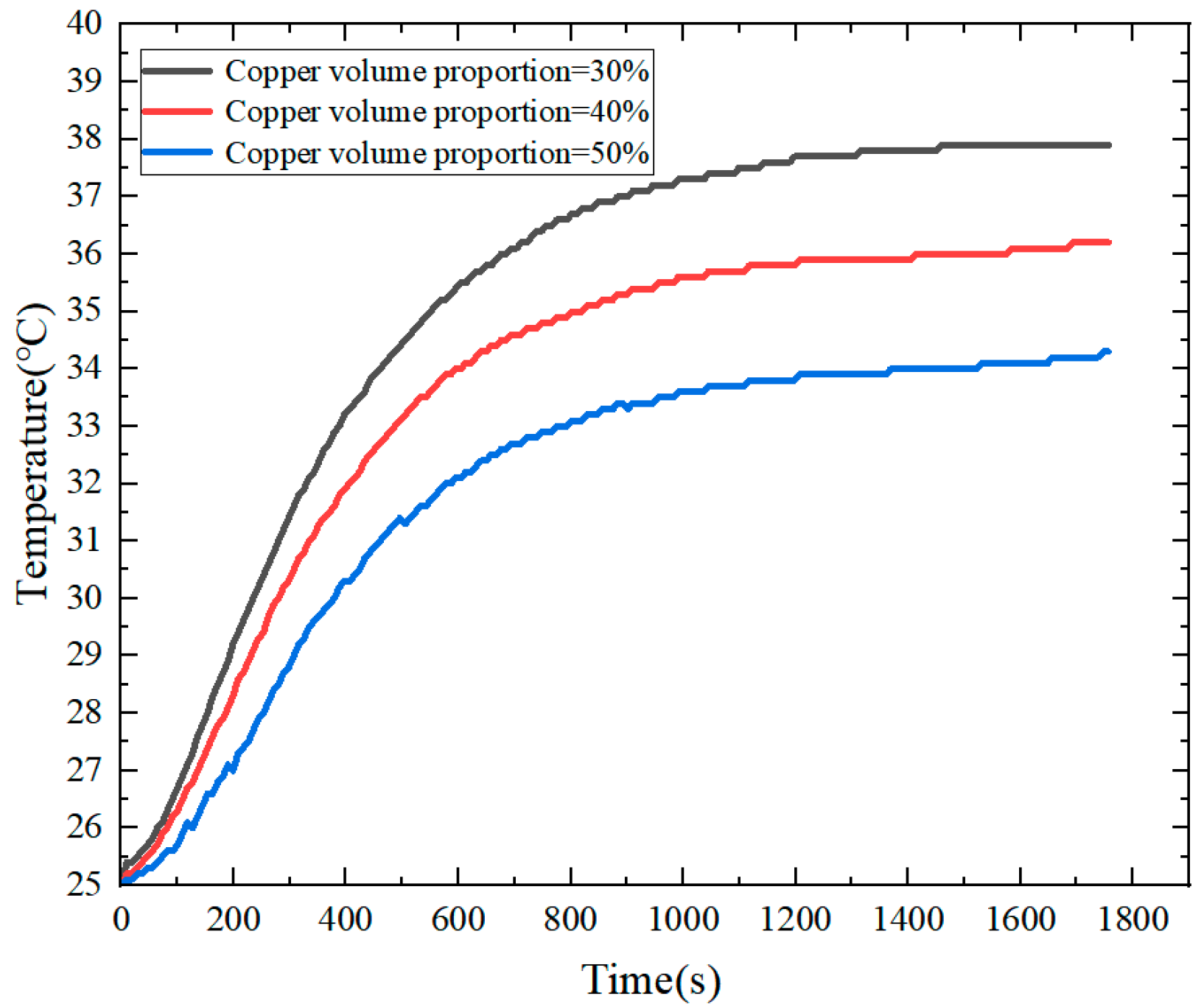

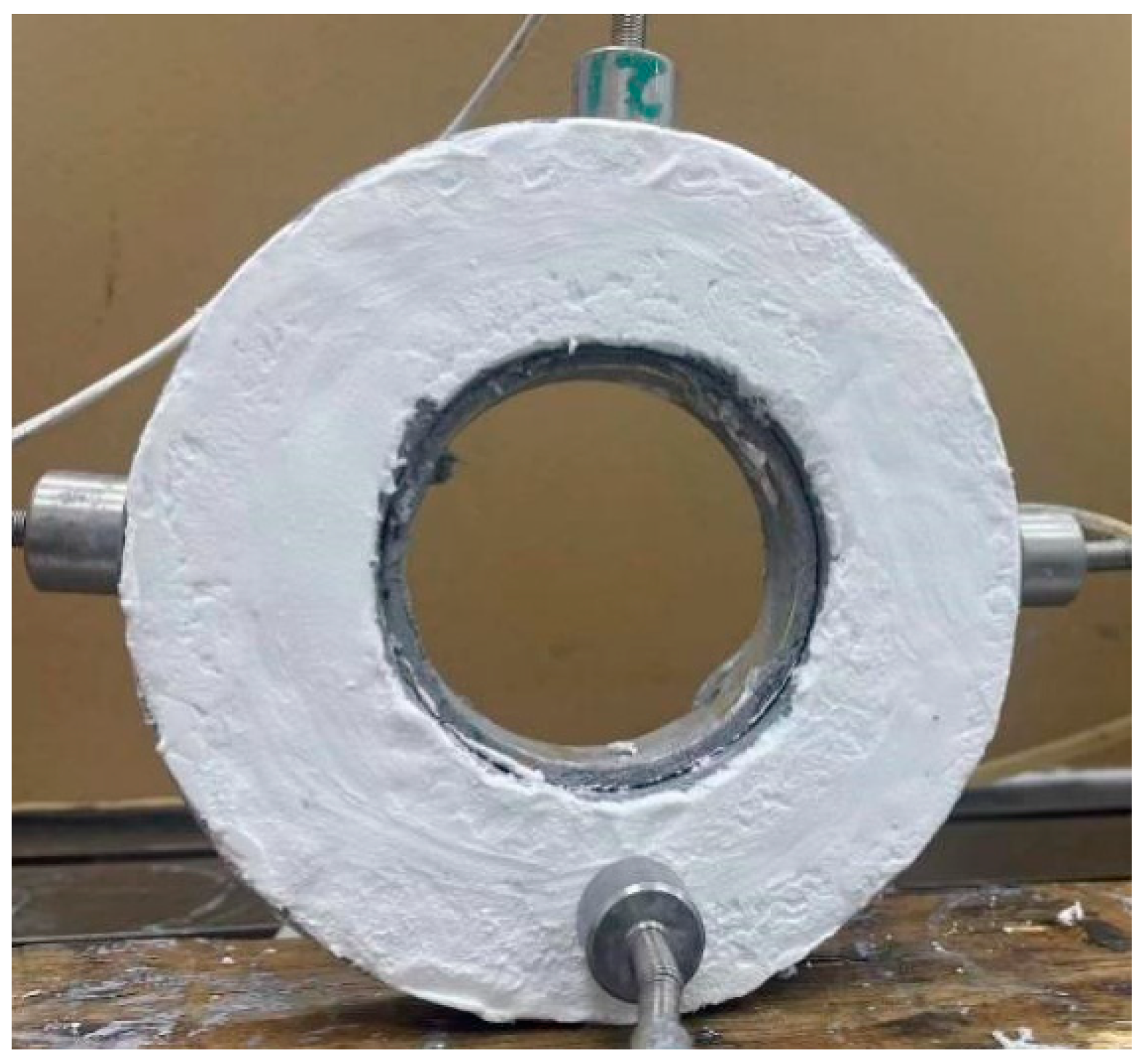
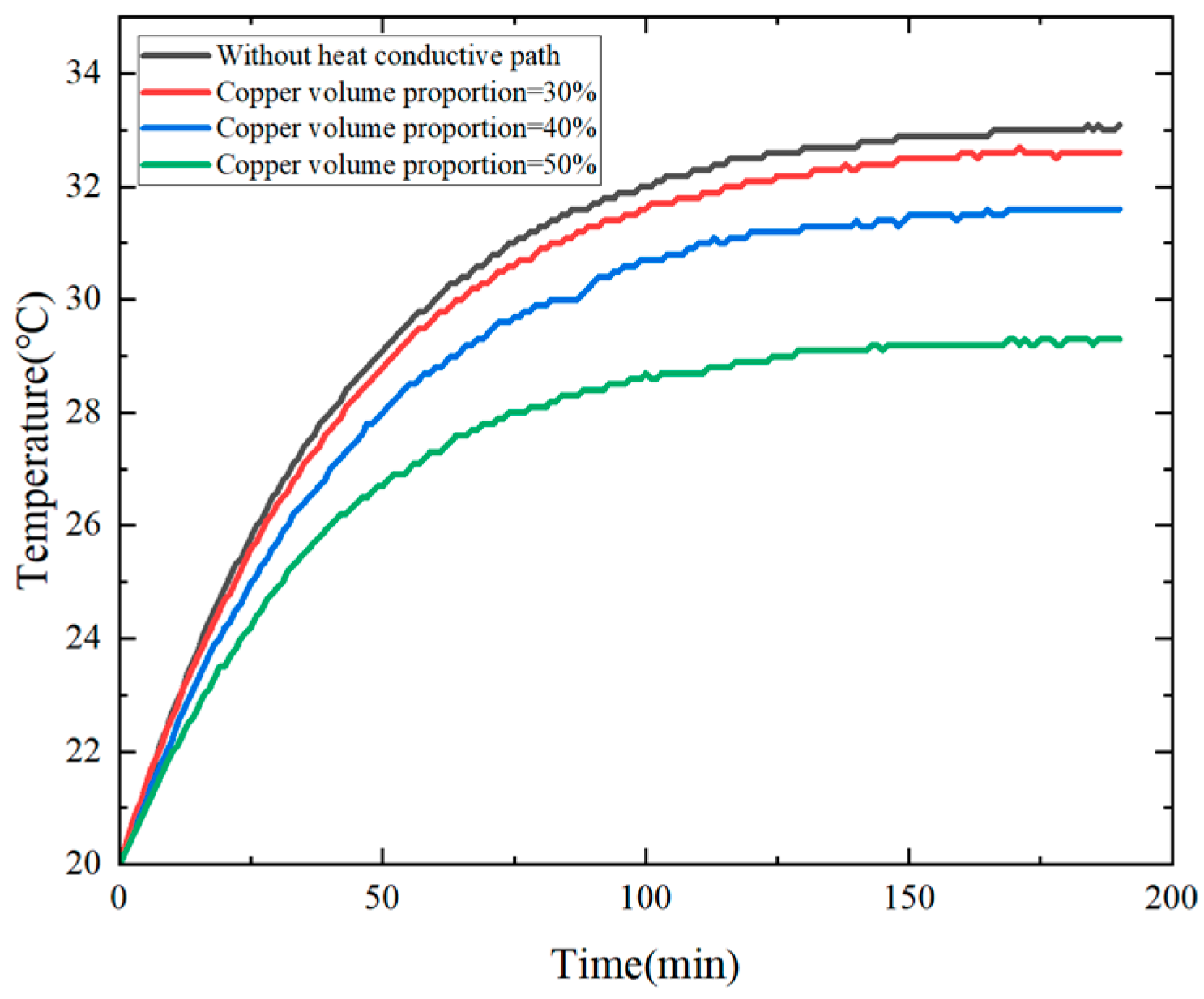

| Inner Diameter/d | Outer Diameter/D | Width/B | Highest Running Speed (Oil Lubrication) | Weight | C0r |
|---|---|---|---|---|---|
| 50 mm | 80 mm | 16 mm | 17,700 r/min | 0.259 kg | 21.9 kN |
| Thickness d | Inner Radius r1 | Outer Radius r2 | Steel Thermal Conductivity k0 | Steel Thermal Conductivity k1 |
|---|---|---|---|---|
| 0.032 m | 0.08 m | 0.04 m | 50 W·m−1K−1 | 401 W·m−1K−1 |
| Infrared Resolution | Measuring Range | Accuracy | Thermal Sensitivity | Frame Rate (Full Frame) | Integration Time (at the Lowest Frame Rate) |
|---|---|---|---|---|---|
| Minimum 640 × 512 | 4–1500 °C | ±1 °C or 1% | <25 mK | >145 Hz | <2 μs |
| Width d | Inner Radius | Outer Radius | Maximum Power | Material |
|---|---|---|---|---|
| 0.032 m | 0.04 m | 0.035 m | 650 W | Steel (Heating coil inside it) |
| Input Voltage | Temperature Sensor | Temperature Range | Ambient Temperature | Output Load |
|---|---|---|---|---|
| AC 220 V | Accuracy ± 0. 5% | 0–600 °C | 0–55 °C | 100–3600 W |
Disclaimer/Publisher’s Note: The statements, opinions and data contained in all publications are solely those of the individual author(s) and contributor(s) and not of MDPI and/or the editor(s). MDPI and/or the editor(s) disclaim responsibility for any injury to people or property resulting from any ideas, methods, instructions or products referred to in the content. |
© 2023 by the authors. Licensee MDPI, Basel, Switzerland. This article is an open access article distributed under the terms and conditions of the Creative Commons Attribution (CC BY) license (https://creativecommons.org/licenses/by/4.0/).
Share and Cite
Li, Y.; Liu, Z.; Li, L.; Tian, J.; Hou, Z.; Zhao, W.; Wu, W. Test and Analysis of the Heat Dissipation Effect of the Spindle Heat Conductive Path Based on the IPTO Algorithm. Processes 2024, 12, 4. https://doi.org/10.3390/pr12010004
Li Y, Liu Z, Li L, Tian J, Hou Z, Zhao W, Wu W. Test and Analysis of the Heat Dissipation Effect of the Spindle Heat Conductive Path Based on the IPTO Algorithm. Processes. 2024; 12(1):4. https://doi.org/10.3390/pr12010004
Chicago/Turabian StyleLi, Yang, Zhongting Liu, Lei Li, Jingyao Tian, Zhaoyang Hou, Wanhua Zhao, and Wenwu Wu. 2024. "Test and Analysis of the Heat Dissipation Effect of the Spindle Heat Conductive Path Based on the IPTO Algorithm" Processes 12, no. 1: 4. https://doi.org/10.3390/pr12010004





